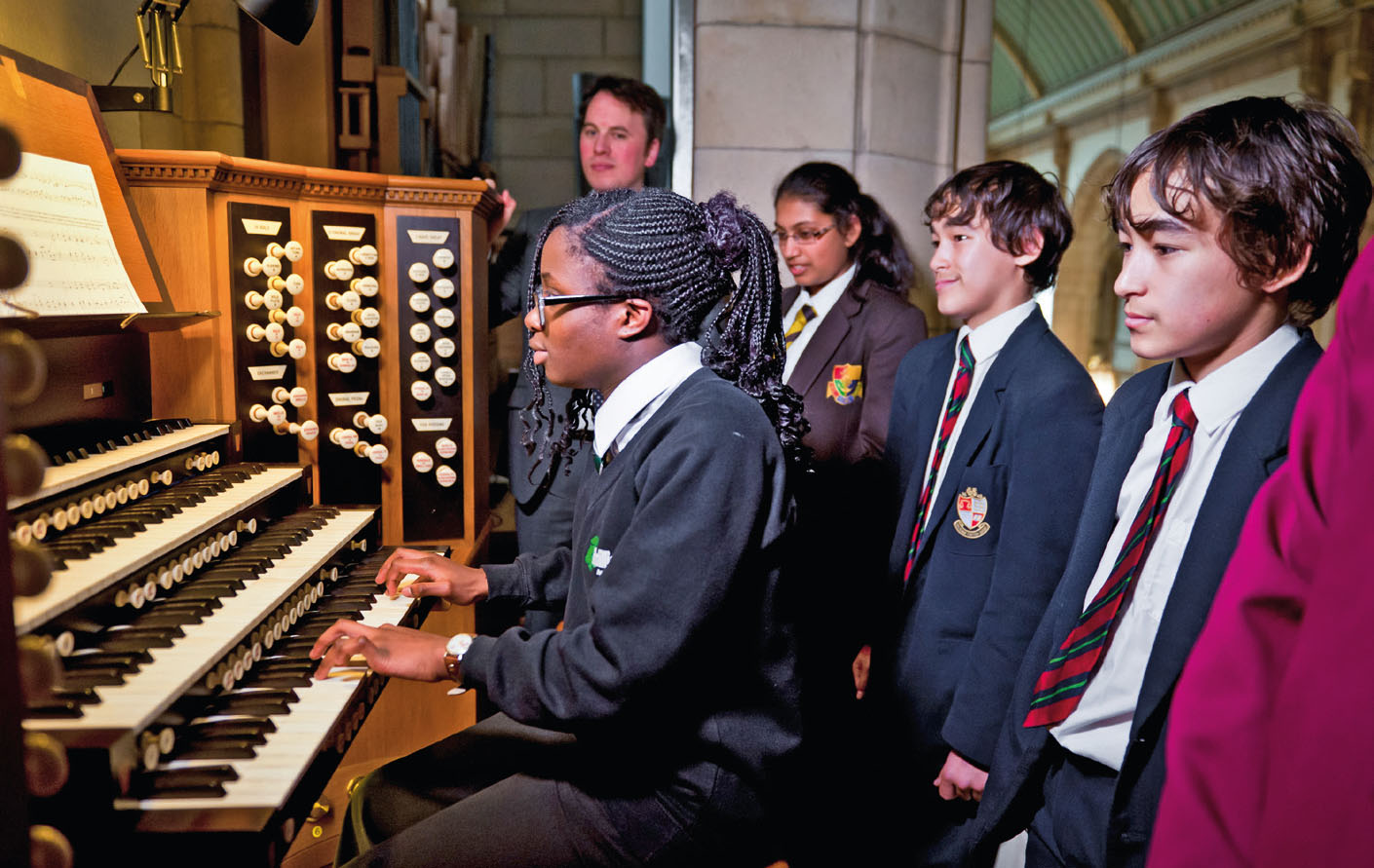
‘In the bleak midwinter, frosty wind made moan,’ the treble sings out, the tone clear and uncluttered, the purity of sound perfectly capturing that evocative wintery scene. I replay the clip; the carol melts. It's easy to see why neurologist and athlete Roger Bannister, the man who first ran the four-minute mile, chose this particular recording as one of his Desert Island Discs in 1992, selected to remind him of Christmas in Oxford. The youthful soloist is Jeremy Pound, now deputy editor of BBC Music magazine, who sung as a New College chorister from 1979 to 1985.
Historically, being part of a cathedral choir was a serious undertaking. ‘I had to learn to be very self-disciplined which, frankly, was quite the uphill task at first,’ says Pound. ‘On top of the choir practices and evensong, we were also expected to practise two instruments daily. That didn't leave very much time to get homework done – and any notion of free time hardly existed.
‘Being a chorister essentially dictates who you are for five or six years – it governs everything you do, and shapes your life over that period. If you're singing in a normal choral group, even if you care deeply about it and are hugely committed, it doesn't tend to rule your life to such an extent. As for repertoire, much of what we sang was either Renaissance or 20th century, with not a great deal in between – the occasional bit of Bach, and a moment or two of clunky Victoriana such as S. S. Wesley here and there – this was in part due to the demands of the daily service in the chapel. There were occasional concert performances of larger works, such as the Mozart Requiem, but those were the extra engagements rather than the core routine.’
A break with tradition
While cathedral choirs continue to fulfil traditional duties within a religious framework, the musical element has expanded in recent years. This has had an impact on the cultural aspects of cathedral singing, once seen as the lofty preserve of the upper-middle classes. As well as running the elite choirs at Leeds Cathedral, the Diocese of Leeds now works with over 3,500 children on a weekly basis, across 53 schools in West Yorkshire. The choral directors currently run six boys’ choirs, six girls’ choirs, five mixed children's choirs, two youth choirs, three university choirs and an adult choir. The school choirs act as a filter for the cathedral singing activity, meaning that the ‘elite’ singing groups are arguably the most socially diverse – and with the most open access routes – in the country.
‘As far as I'm aware this is the largest church music programme in the country,’ says Thomas Leech, director of the schools singing programme for the Diocese of Leeds. ‘It's a diocesan programme rather than a cathedral-centred approach. Although the cathedral choirs are of an extremely high standard, it's always been important to us that the school-based work is most important – that then reaches out to the elite choirs, rather than the other way around.’
This approach is becoming less unusual; Bath Abbey and Liverpool Metropolitan Cathedral are both exploring the model established by Leeds. Casting the net wider requires sensitivity. ‘In schools, teachers offer age-appropriate music with a mix of secular and religious songs – not churchy, we don't bring religious music into an environment where it would be unsuitable to do that. The main concern is that music is of a high quality, whatever genre,’ explains Leech. ‘The educational rationale is really sound – engaging children is critical, as is delivering things that the schools need in terms of reporting. The staff then identify children who may do well within the school choirs and cathedral choirs, which are wholly recruited from those sessions.
‘Singing is so basic to human expression. There's even – dare I say it – no need to read music. There's also a collaborative element and shared experience: with the right leadership children can achieve a high standard vocally in a relatively short period in a way that is much harder with, say, group ukulele classes.’
One voice
Singing as a chorister, or as a part of a choir more generally, is sometimes equated with collaborative working. Pound is sanguine about these claims: ‘I'd say that the sense of working to a routine has been very useful. What I don't buy into so much, though, is the oft-cited notion that singing as a chorister somehow fosters the idea of working in a team. That's a fanciful idea dreamed up in the heads of adults – chorister minds don't tend to work that way. If my memory serves me rightly, singing as a chorister mainly involved concentrating on your own line, trying to avoid making mistakes – the idea that I was some part of some glorious collective all pulling together didn't really occur to me.’

Choristers receive proper support to ensure retention
Singing as a chorister even just a few decades ago was a wholly different cultural experience. Pound remembers there being ‘a sink or swim mentality’. ‘Choristers were treated as little more than vocal accessories and the dropout rate was far higher than it should have been.’ Conversely, Leech and his colleagues do ‘whatever it takes’ to support students. ‘We have some students coming from very deprived areas and that does mean we have to bus them in or pay for taxis,’ he says. ‘We're not in the business of churning out conservatoire-standard singers – for us it's more about development. We now have young adults who have gone through the whole system, starting as primary pupils, and now sing as choral scholars.’

Thomas Leech: ‘The school-based work is most important’ © FERGUS WILDE
Of course it helps that there is now a greater level of accountability, aided by the reality that the Leeds programme operates in the same way a music service or hub would. The appeal in working with a Cathedral-based singing team is that ‘we can provide tens of thousands of singing hours in an economically lean way,’ says Leech. Some people may see controversy attached to employing music provision that's inextricably linked to a church, but, when it is thoughtfully delivered, as with Leeds, access to choir life brings opportunity where it is most needed.
Members of Bradford Catholic Youth Choir, based at St Bede's and St Joseph's Catholic College in Bradford, recently performed at the launch of Bradford Council's Economic Strategy, and several choirs in the diocese broadcast regularly for the BBC worship slots – with the cathedral choirs on Radio 3. ‘It's a signifier of the quality of the music-making,’ concludes Leech. And the really wonderful thing? ‘The kids don't necessarily realise that it's a big deal. They feel they belong.’




